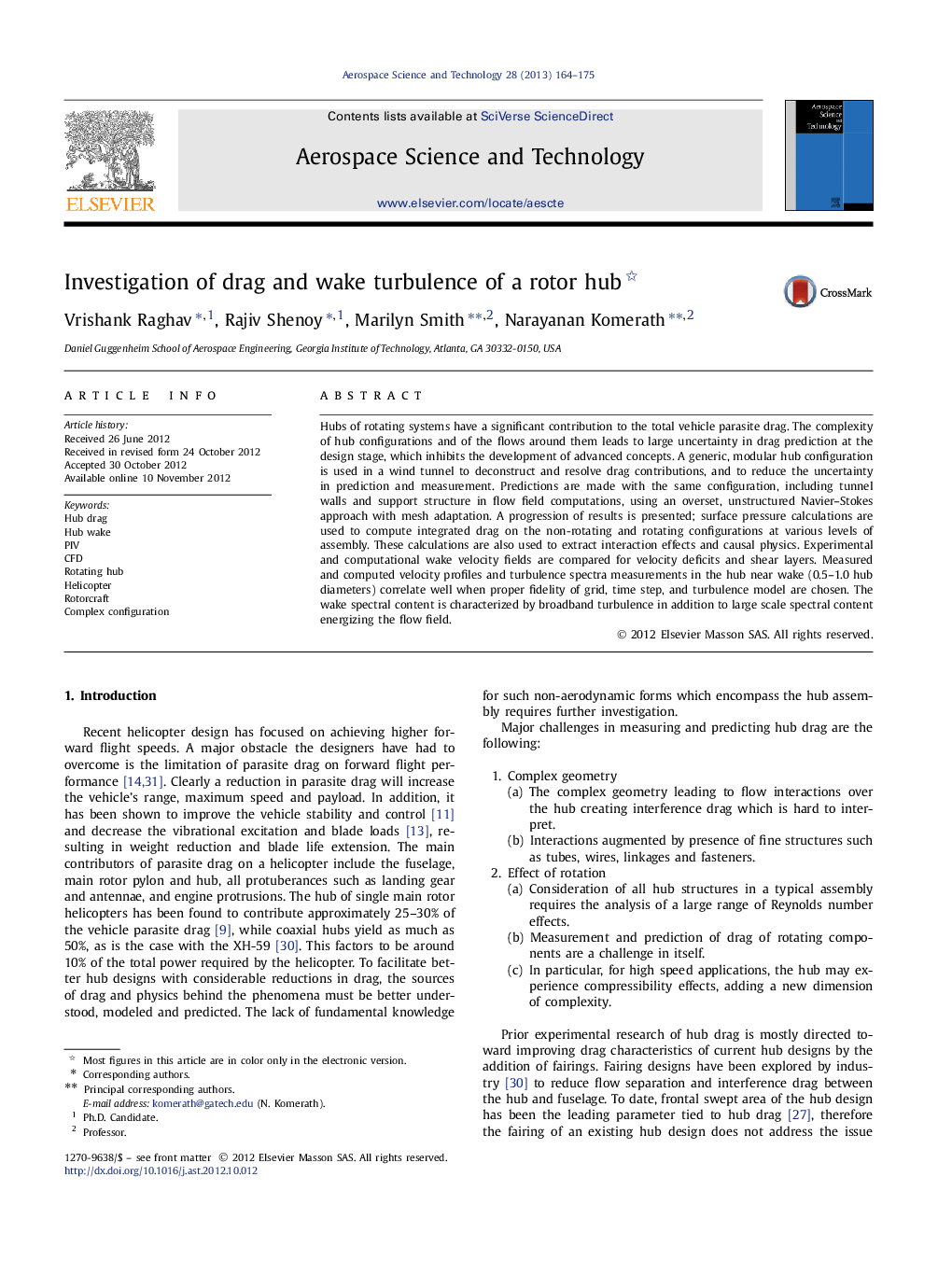| Article ID | Journal | Published Year | Pages | File Type |
|---|---|---|---|---|
| 1718270 | Aerospace Science and Technology | 2013 | 12 Pages |
Hubs of rotating systems have a significant contribution to the total vehicle parasite drag. The complexity of hub configurations and of the flows around them leads to large uncertainty in drag prediction at the design stage, which inhibits the development of advanced concepts. A generic, modular hub configuration is used in a wind tunnel to deconstruct and resolve drag contributions, and to reduce the uncertainty in prediction and measurement. Predictions are made with the same configuration, including tunnel walls and support structure in flow field computations, using an overset, unstructured Navier–Stokes approach with mesh adaptation. A progression of results is presented; surface pressure calculations are used to compute integrated drag on the non-rotating and rotating configurations at various levels of assembly. These calculations are also used to extract interaction effects and causal physics. Experimental and computational wake velocity fields are compared for velocity deficits and shear layers. Measured and computed velocity profiles and turbulence spectra measurements in the hub near wake (0.5–1.0 hub diameters) correlate well when proper fidelity of grid, time step, and turbulence model are chosen. The wake spectral content is characterized by broadband turbulence in addition to large scale spectral content energizing the flow field.
